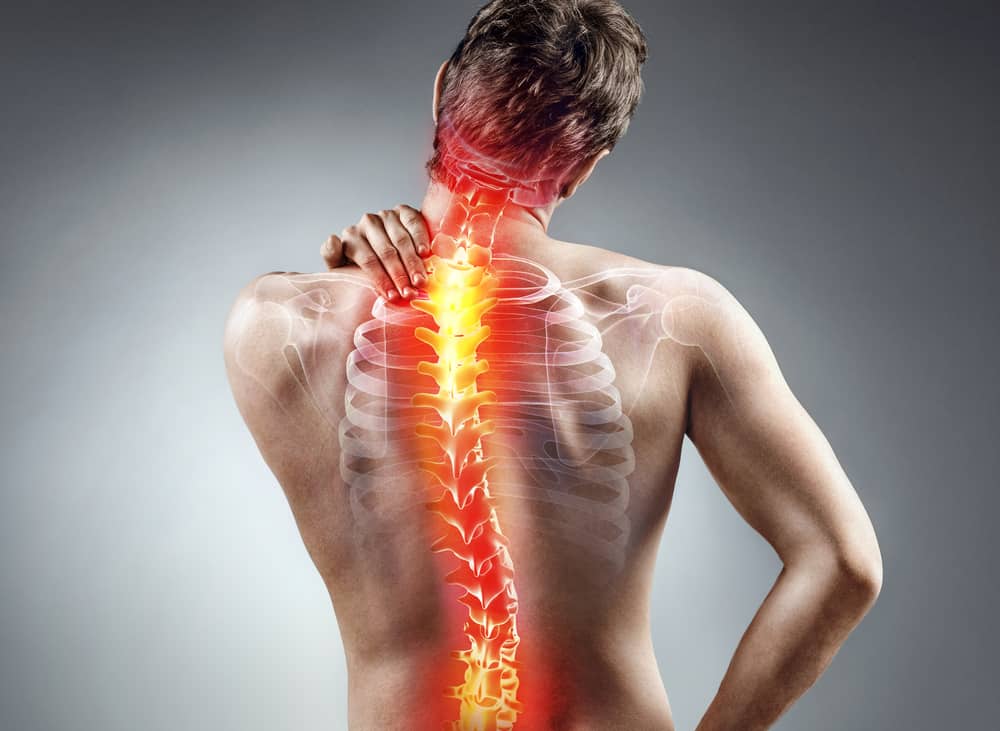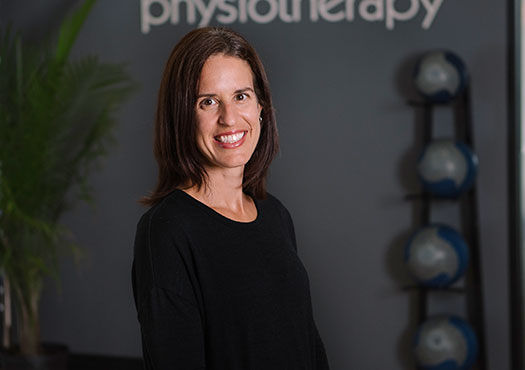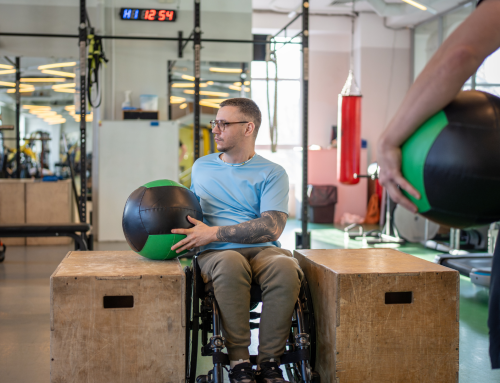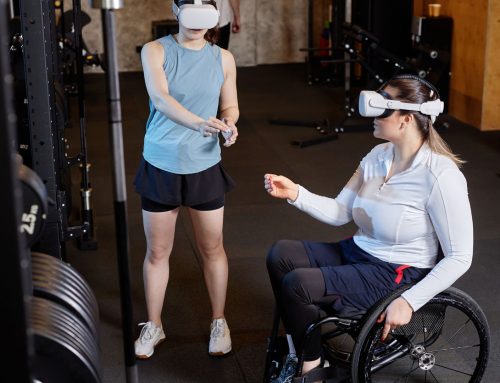There are a variety of health professions and therapies that can help treat and prevent back pain. Two of the most commonly sought are physio or chiro. To help you choose between physio or chiro for back pain, we would like to help you understand a bit more about each profession and their approach.
Back problems are among the most common chronic conditions in Canada. ¹ Four out of five adults will experience at least one episode of back pain at some time in their lives.² Back pain can have debilitating effects on a person’s day to day activities and ability to engage in work and leisure. The good news is that back pain is treatable and preventable with the proper therapeutic assessment and treatment plan.
Role of Chiropractor vs Physiotherapist
The role of a chiropractor and a physiotherapist have a similar scope of practice but there are also some key differences.
According to the Canadian Physiotherapy Association, “physiotherapy is a primary care, autonomous and client-focused health profession dedicated to improving quality of life.” This is achieved by “promoting optimal mobility, physical activity and overall health and wellness; preventing disease, injury, and disability; managing acute and chronic conditions, activity limitations, and participation restrictions; improving and maintaining optimal functional independence and physical performance.”
A physiotherapist’s training is rooted in movement sciences and is applicable to the health of people living with musculoskeletal, neurological, cardiorespiratory, and multi-systems issues. Physiotherapist’s can analyze the impact of injuries and disorders and determine how it has influenced a person’s movement, function, and lifestyle. Physiotherapists help to promote, educate, restore, and prolong physical independence of their patients/clients.
According to the Canadian Chiropractic Association, chiropractors are “extensively educated in the prevention, assessment, diagnosis and management of musculoskeletal conditions and associated neurological system and will recommend a course of treatment to help relieve pain and improve function without surgery or pharmaceuticals, such as manipulation, mobilization, soft tissue therapy, exercise, education, modalities (i.e. ultrasound or laser) and rehabilitation.

Chiropractors are also trained to provide nutritional counselling, as well as recommend injury prevention strategies.” A chiropractor’s training is rooted in orthopaedic alignment of the body, the spine, and biomechanical principles.
Physiotherapists and chiropractors both use a comprehensive approach to provide an accurate assessment and treatment of a patient or client’s concerns.
Related story: Lower Back Pain Treatment
Education and Professional Settings
Both physiotherapists and chiropractors have an extensive amount of training and education. There may be some variability for both professions in Canada, however, these are the guidelines on education within the province of Ontario.
In Ontario, physiotherapists are required to complete a four-year undergraduate university degree followed by a two-year Master’s degree in physical therapy. After that, the physiotherapist must successfully complete their two-part licensing exam, which includes a written and practical component. Upon successful completion, the candidate receives the title of Registered Physiotherapist.
Physiotherapists are integrated into the Canadian health system as they can work in hospitals providing in-patient and outpatient care. Physiotherapists have been recognized as rehabilitation and recovery experts, and can assist with injury recovery.
According to the Canadian Chiropractic Association, “The Canadian Memorial Chiropractic College (CMCC) in Toronto requires a minimum of a three-year bachelor’s degree, then four-years full-time study at Chiropractic school. Similarly, licensing exams must be successfully completed before the candidate receives the title of Doctor of Chiropractic.
Chiropractors are mainly seen in private practice settings and provide care through a holistic approach. They can also provide in-home/ community care for their patients/clients.
Related story: Physiotherapy Can Help Alleviate Arthritis Symptoms
Chiropractor or Physiotherapist for Back Pain
At Propel Physiotherapy, we have an integrated team of health professionals, including a chiropractor, physiotherapists and registered massage therapists, who can work together to address your needs. Both chiropractors and physiotherapists view and assess back pain in similar ways.
A chiropractic exam can include an assessment of the range of motion, muscle tone, and neural integrity of the affected area. Some chiropractors use x-rays to identify a structural abnormality and diagnose a condition or disorder. In addition, chiropractors will be able to observe the alignment of the spine and make recommendations on its mobility and function.
A physiotherapist’s assessment includes a detailed examination of the possible sources of back pain including neurological, musculoskeletal, systemic, and imbalance throughout the body. As well, physiotherapists examine the range of motion and strength of the surrounding structures, as well as assess posture, to best determine and treat the source of pain.
One of the main differences between physiotherapists and chiropractors is the type of treatment provided by the individual clinician. Some chiropractors view the primary area of concern as the alignment of the spine. As such, chiropractors typically use high velocity thrusts on spinal joints that are causing dysfunction and pain for that area. At Propel Physiotherapy, Dr. Lalonde takes a more holistic, non-invasive, approach to managing the health of your muscles, spine, joints, and nervous system that includes exercise and education.
Some physiotherapists also use manipulation techniques (which require additional training), while most typically use mobilizations to improve range of motion and pain. A physiotherapist will use an evidence-based approach to determine which modality would best suit your situation.
Physiotherapy interventions can also include the use of modalities such as acupuncture, cupping, interferential current, and shockwave therapy to aid in the relief of back pain. Physiotherapists often include relevant physiotherapeutic exercises to help the client improve their back pain symptomology outside of the clinic.
Registered physiotherapist Hoong Phang from Propel Physiotherapy demonstrates cat cow mobilization, which brings the spine (lumbar, thoracic, and cervical) into flexion and extension, and promotes an active range of motion within a pain free zone. It also help to enable the low back’s erector spinae complex (muscles) to lengthen and shorten, improving blood flow to the area and enables activation of the low back muscles.
Recent literature suggests that for majority of acute back pain issues with no systemic complications or serious medical and radiological diagnosis (e.g., spinal fractures) movement is the best type of medicine. From a physiotherapist’s perspective, the focus on a successful recovery and rehabilitation for back pain is based on movement, function, strength, and overall abilities, not just pain.
Choosing the right health practitioner for your back pain
Here are some things to consider when choosing the right practitioner for you:
- Look into the experience of clinics and practitioners in your area
- Check out the clinicians’ bios on their website. Do they have the right accreditation and experience?
- Find out which type of practitioner is covered by your insurance
- Talk to your clinic or practitioner to see if they provide a free phone consultation
- Ask clinics if they provide other services such as massage therapy and acupuncture that can be beneficial for your back pain
- Take a tour of the clinic and see if you feel comfortable being provided treatment there
- Check out the Canadian Physiotherapy Association website
- Check out the Canadian Chiropractic Association website
Contact our front office to learn more about our physiotherapy and chiropractic care services. Get a complimentary consultation to find out which one is right for you!
References
¹StatsCan
²StatsCan
Written by

















